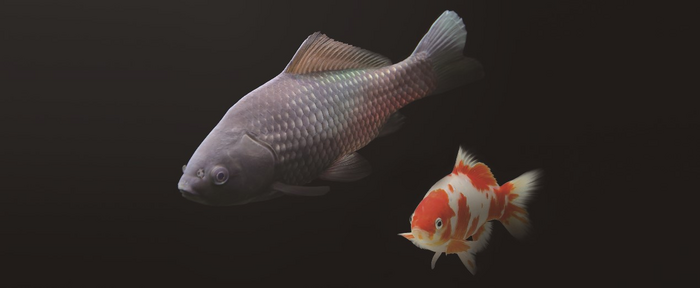Unisexual reproduction lacks meiotic recombination, resulting in the accumulation of deleterious mutations and hindering the creation of genetic diversity. Thus, unisexual taxa are commonly considered an evolutionary dead end.

Credit: IHB
Unisexual reproduction lacks meiotic recombination, resulting in the accumulation of deleterious mutations and hindering the creation of genetic diversity. Thus, unisexual taxa are commonly considered an evolutionary dead end.
Intriguingly, some unisexual fishes and reptiles have outlived their predicted extinction time and exhibit high genetic diversity and strong environmental adaptation, yet evolutionary mechanisms underlying unisexual reproductive success generally remain unclear in these vertebrates.
Researchers led by Prof. GUI Jianfang from the Institute of Hydrobiology (IHB) of the Chinese Academy of Sciences and their collaborators recently revealed the evolutionary puzzle of unisexual reproductive success in hexaploid gynogenetic gibel carp (Carassius gibelio).
This study was published in Nature Ecology & Evolution on July 11.
In this study, the research team sequenced the genomes of sexual tetraploid crucian carp (C. auratus) and unisexual hexaploid gibel carp (C. gibelio) and assembled their haplotypes to the chromosome level. Both haplotypes have 50 chromosomes, which comprise two subgenomes (25 chromosomes in subgenome A and 25 chromosomes in subgenome B).
Sequencing coverage analysis reveals that tetraploid C. auratus is an amphidiploid (AABB) with two diploid sets of chromosomes and hexaploid C. gibelio is an amphitriploid (AAABBB) with two triploid sets of chromosomes.
Based on the resequencing data from different strains of C. auratus and C. gibelio, the research team demonstrated that amphitriploid C. gibelio originated from ancestral amphidiploid C. auratus via autotriploidy about 0.82-0.96 million years ago. The amphitriploid C. gibelio overcame the meiotic obstacle caused by three homologous chromosomes through unisexual gynogenesis.
Through comparative genomics, the researchers identified intensive expansion and alterations of meiotic cell cycle-related genes and an oocyte-specific histone variant in C. gibelio. They found that most of these expanded genes showed high expression in ovaries and oocytes.
In addition, the research team found that C. gibelio produces unreduced oocytes by suppressing meiosis I. However, sporadic homologous recombination and a high rate of gene conversion were revealed during oogenesis of C. gibelio. These genomic changes might have facilitated purging deleterious mutations and maintaining genomic stability in amphitriploid C. gibelio.
Journal
Nature Ecology & Evolution
DOI
10.1038/s41559-022-01813-z
Article Publication Date
11-Jul-2022




